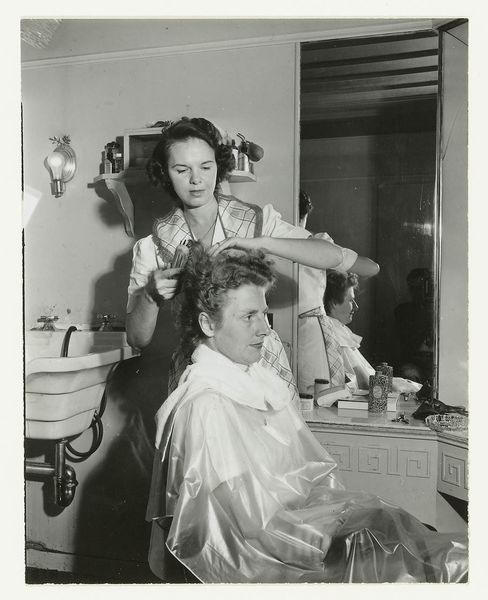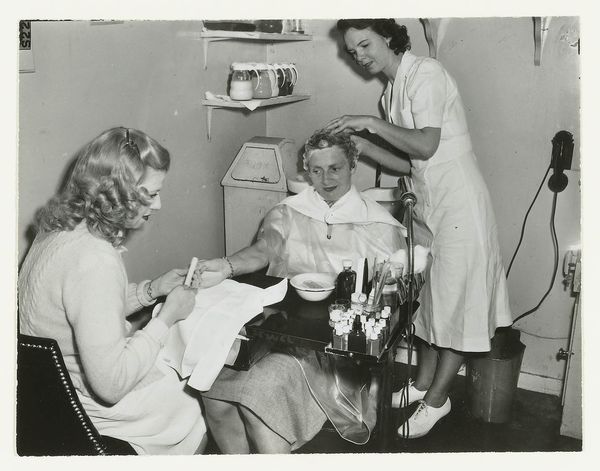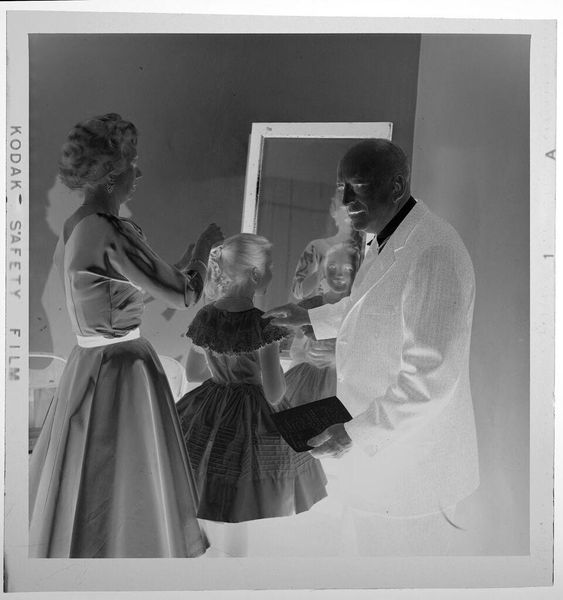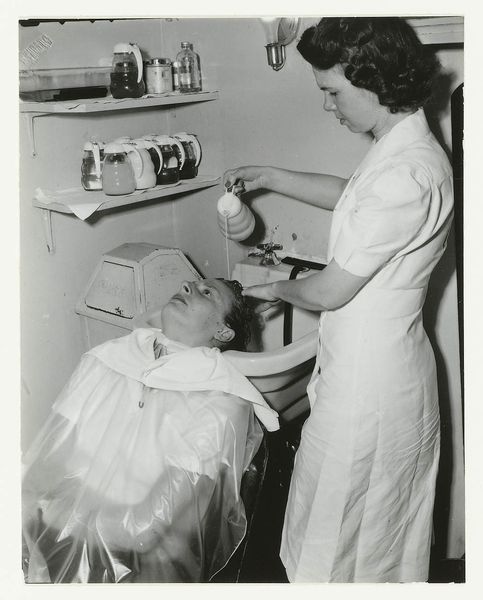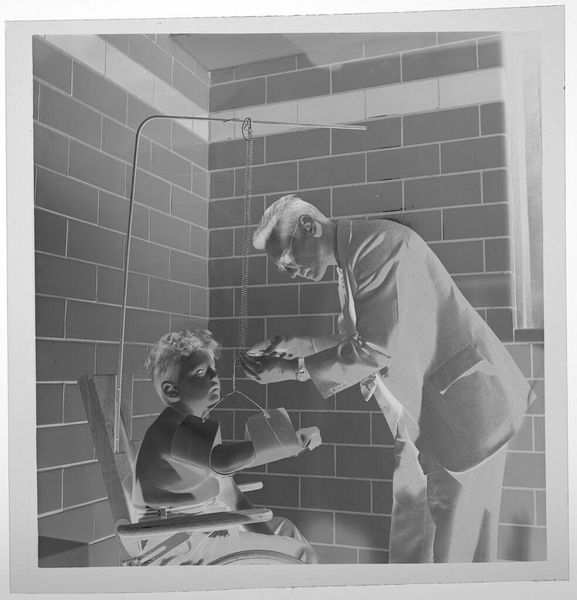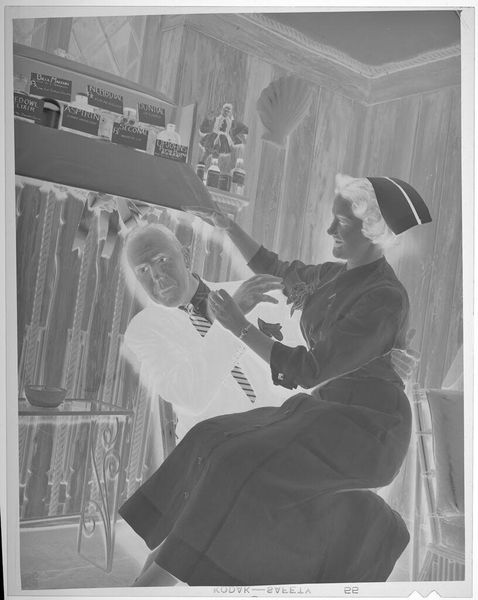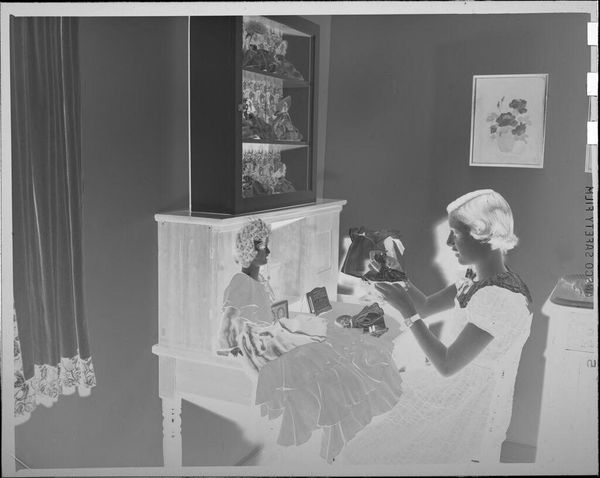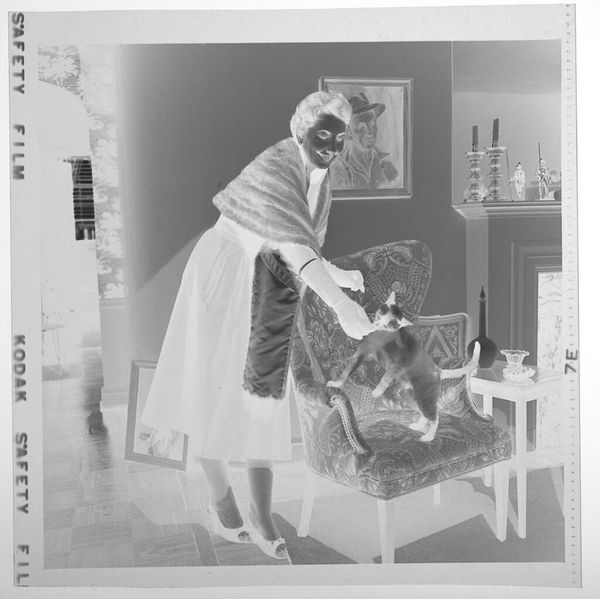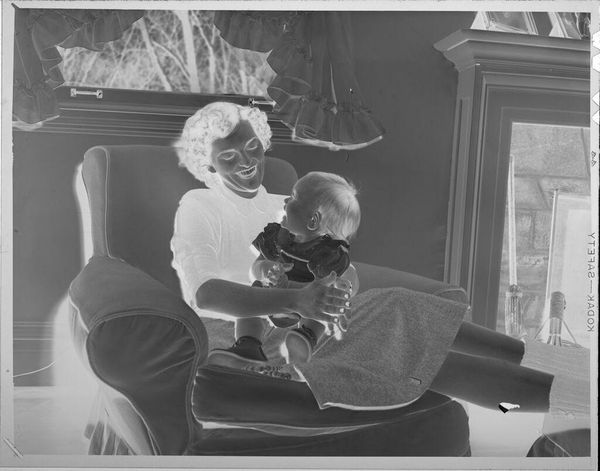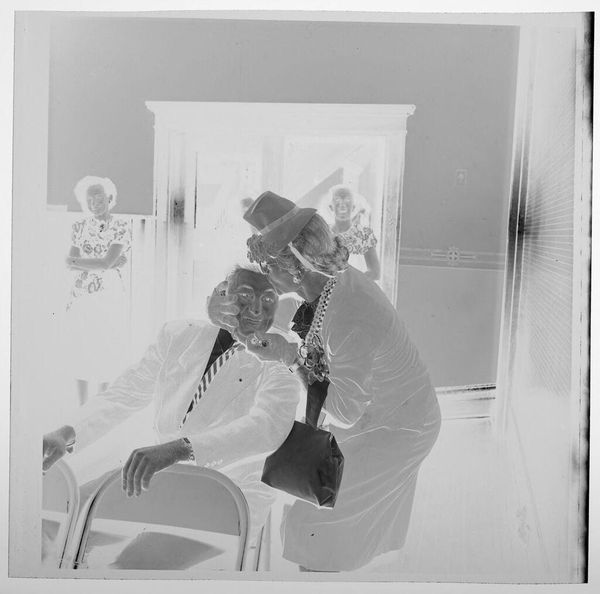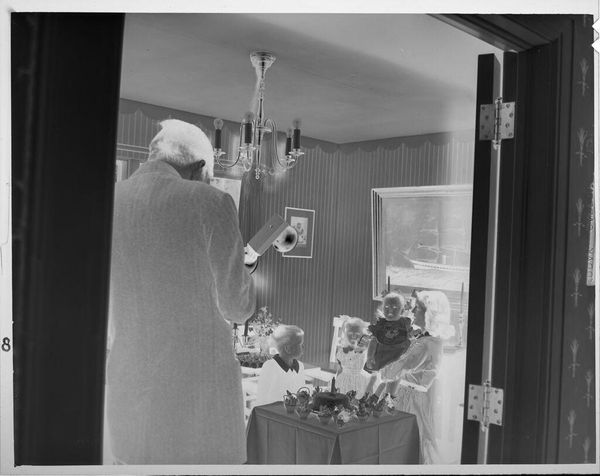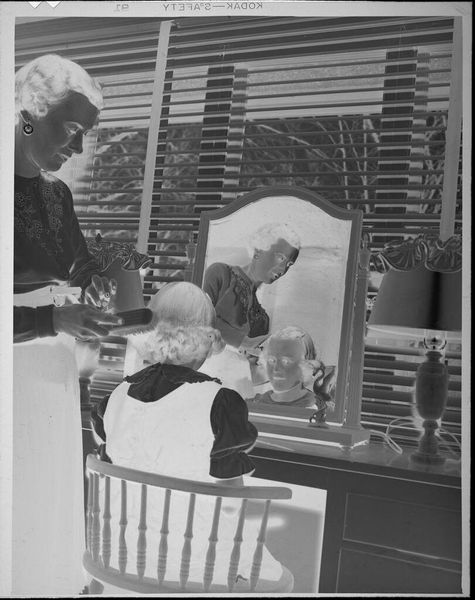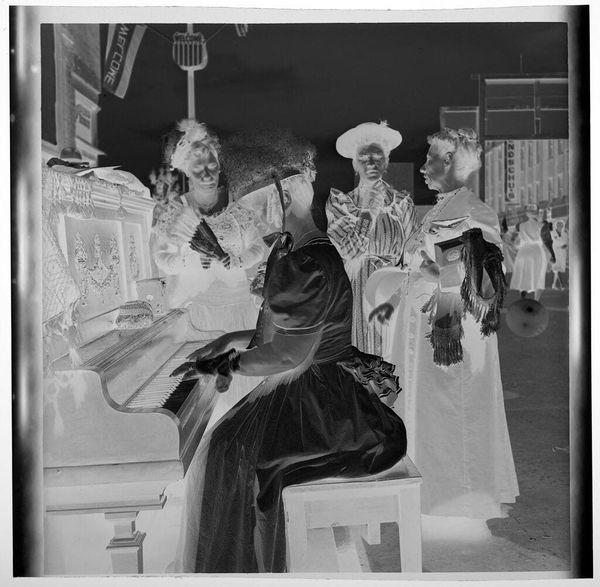
Dimensions: width 9 cm, height 12 cm
Copyright: Rijks Museum: Open Domain
Curator: Let's discuss this gelatin-silver print, "Fanny Gets a Facial Mask," thought to be from 1949. What are your first impressions? Editor: My immediate reaction is a feeling of staged intimacy, yet also of distance. The light and shadow are stark, rendering it both personal and strangely formal. Is there a story it evokes for you? Curator: Immediately I see symbols of feminine expectation and labour in this period of mid-century modernity. The careful grooming, the act of 'care' being administered—it all speaks to constraints on women's identity, as objects of beauty in patriarchal culture. Editor: And visually, note the contrast between the attendant, sleek and conventionally 'put-together,' and the client whose face is covered in dark smudges. She has been rendered temporarily ‘unseen’. Curator: Exactly. It underlines the pressures placed on women to transform their appearances in line with narrow definitions. We could delve into broader class dynamics: Who has the luxury to engage in these practices, and whose labour facilitates that luxury? Editor: I wonder, too, about the net on the woman's hair – it speaks to me about fragility and concealment. Consider how this simple detail hints at so many unspoken narratives: fear of aging, perhaps, or an awareness of performance in one’s beauty regimen. Curator: These types of practices, seemingly personal, become intensely political when we analyze who has access, and how beauty standards influence the value placed on women. It's about social mobility, visibility, and self-worth all wrapped into one mask. Editor: Right—this simple, contained image functions almost like a modern memento mori: beauty is fleeting. We are shown what society requires of women and what women must hide or mask to get by. Curator: Indeed. It leaves you wondering about the layers beneath that mask – what remains unseen, and at what cost? Editor: It certainly encourages reflection on how constructed ideals become deeply internalized pressures. Thank you for helping to unlock its narratives!
Comments
No comments
Be the first to comment and join the conversation on the ultimate creative platform.
